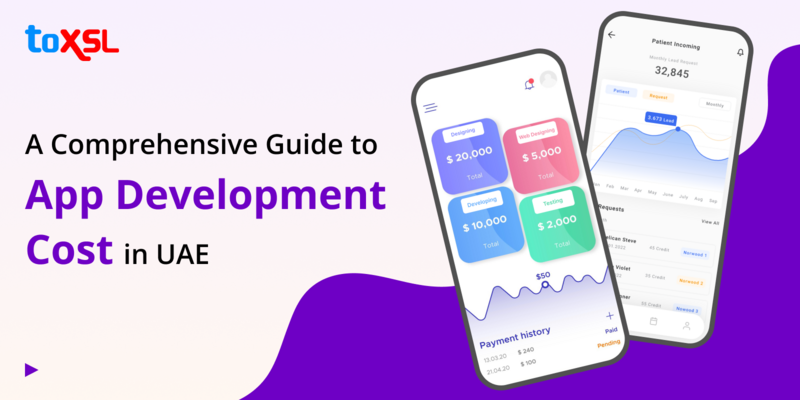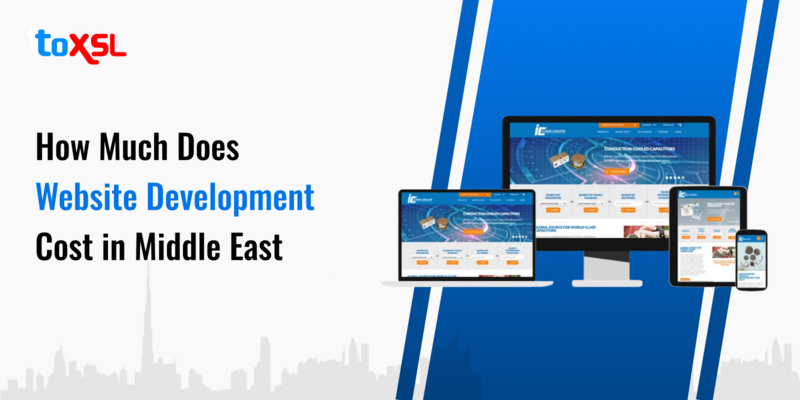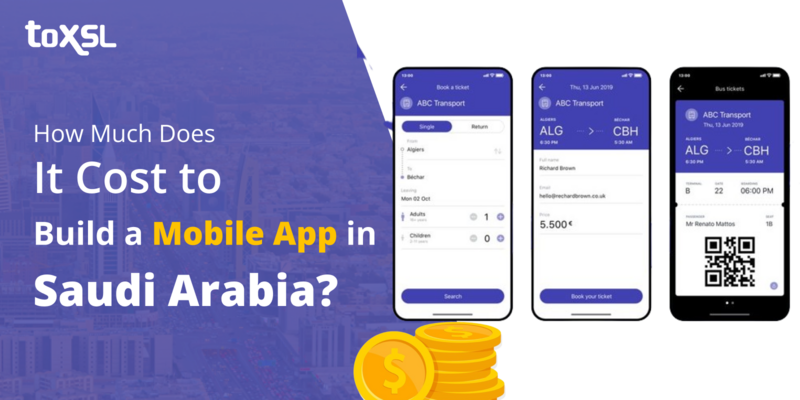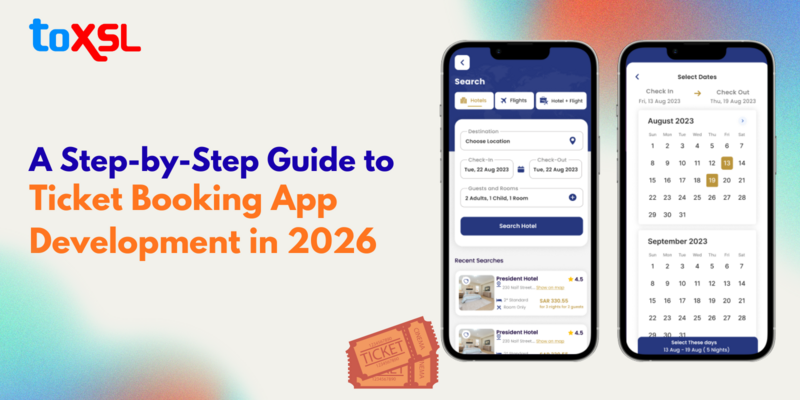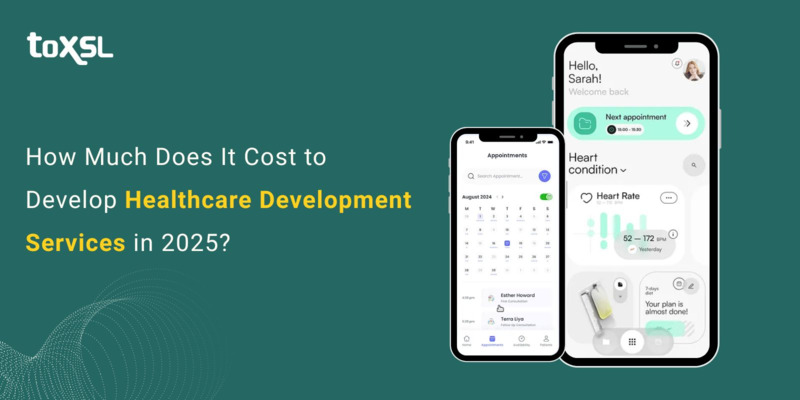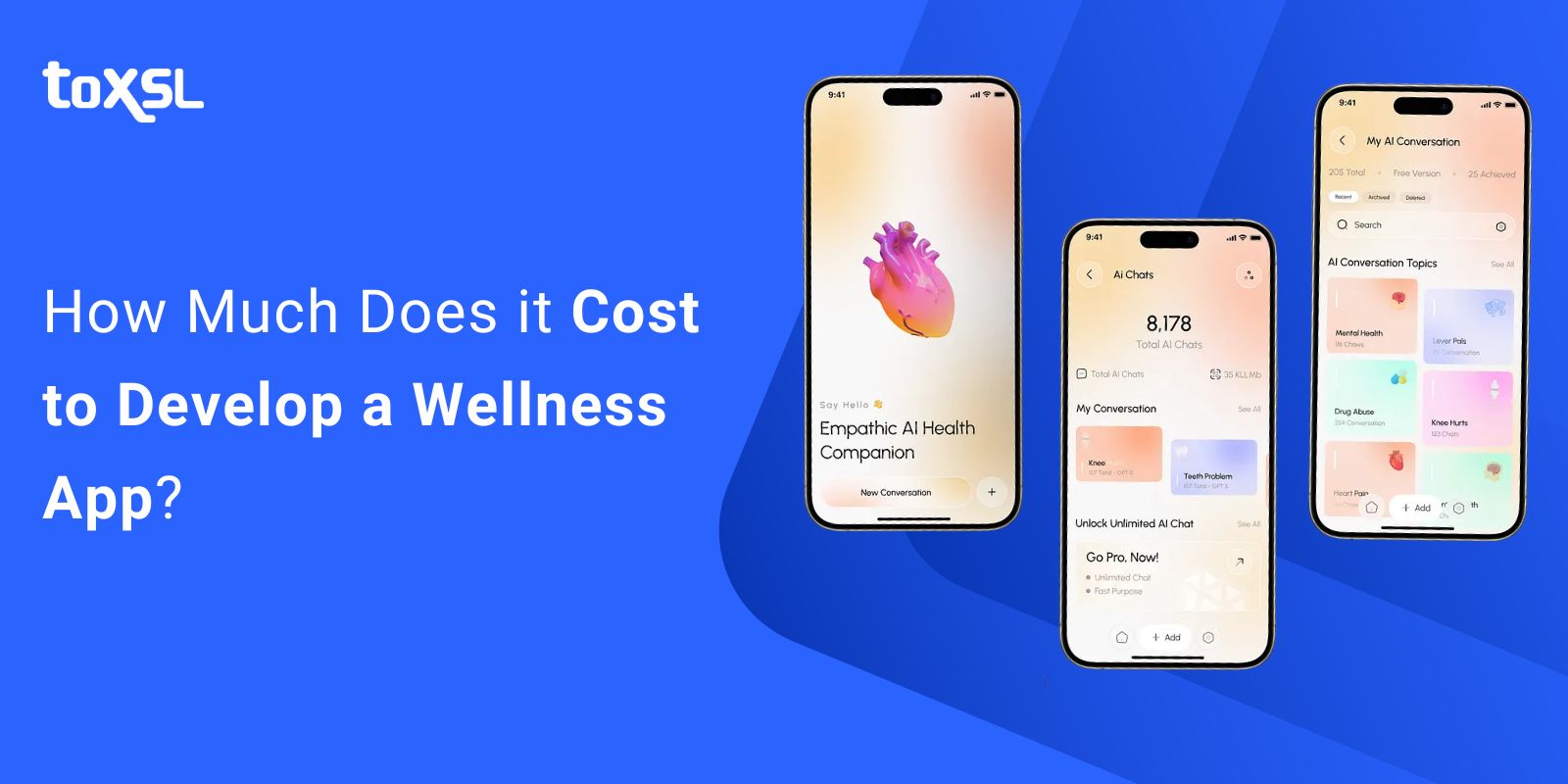
Today, wellness apps are trending, and more people are turning to wellness apps to keep themselves healthy. Users are constantly seeking apps and are increasingly investing in their mental health, physical fitness, and overall well-being. The increased trust of users in these apps has led to a rising demand for all types of fitness apps, making it a great opportunity for founders to enter the healthcare industry.
The global healthcare app market size is estimated to hit $88.70 billion by the end of 2032, CAGR of 11.8% during the forecast period. With that, AI is taking over the numerous industries, including the healthcare industry, transforming dramatically after the integration of automation and artificial intelligence (AI).
To give you a quick overview, the cost to develop a wellness app starts at $10,000 and can increase based on how much customization you need. Furthermore, in this blog, we will brief you about wellness apps, the costs associated, and the factors determining the cost of development.
Key Takeaways
- Wellness apps are in high demand due to increasing mental health and fitness awareness.
- Key cost drivers include app features, platform choices, integrations, and design complexity.
- There are different types of wellness apps, including fitness, meditation, and lifestyle tracking.
- Essential features include activity tracking, personalized plans, and secure data management.
The Need for Wellness Apps in Today’s Digital Age
There are 350,000 health apps available across app stores, as per data from Statista. But why are there so many wellness apps? What’s so trending about them?
Wellness apps monitor and improve their physical health, mental well-being, diet, sleep, and hydration. Well-designed wellness apps motivate users by tracking progress and providing customized guidance. In corporate settings, wellness apps enhance employee health, boost productivity, and reduce healthcare costs. Simply put, wellness apps are vital digital companions that contribute to healthier, longer, and happier lives.
Cost to Develop A Wellness App
In general, the cost of developing a wellness app ranges between $10,000 and $ 200,000. However, the cost is not fixed and can vary, depending on the various apps’ features, platform, integrations, and design complexity.
Cost Component | Estimated Cost Range |
|---|---|
Initial Development | $10,000 – $100,000 |
UI/UX Design | $7,500 – $50,000 |
Backend Development | $10,000 – $50,000 |
Testing and Quality Assurance | $5,000 – $25,000 |
Maintenance and Updates (Annual) | $2,500 – $50,000 |
Marketing and Launch | $5,000 – $25,000 |
Total Estimated Cost | $40,000 – $300,000 |
Different Types of Wellness Apps
Wellness apps support different areas of well-being and come with a range of features. Below are some common types of wellness apps.
Fitness Tracking Apps:
These apps help users monitor physical activities such as walking, running, cycling, and workouts. They include features like step counters, calorie burn calculations, workout plans, and performance analytics to motivate users toward a more active lifestyle.
Mental Health and Meditation Apps:
Meditation apps focus on mental wellness. They offer guided meditation, breathing exercises, stress relief tools, and mood tracking. These features help reduce anxiety, improve sleep, and encourage mindfulness.
Nutrition and Diet Planning Apps:
Turning to nutritional well-being, nutrition and diet planning apps assist users in tracking their diet by counting calories, planning meals, and offering nutrition information. They help maintain balanced diets by providing recipes, dietary recommendations, and food logging capabilities.
Sleep Tracking Apps:
Designed to improve sleep hygiene, these apps monitor sleep patterns, provide smart alarms, and offer tips for better rest. They analyze factors affecting sleep quality and often include relaxation sounds or meditation sessions for sleep enhancement.
Hydration Reminder Apps:
Hydration reminder apps encourage users to drink enough water. They estimate daily needs and send reminders to help people stay healthy and hydrated.
Wellness Challenges and Community Apps: These apps build a social aspect by encouraging users to participate in wellness challenges, share achievements, and support each other. Gamification elements increase motivation and accountability.
Yoga and Mindfulness Apps:
Provide instructional yoga classes, guided poses, and mindfulness practices suitable for beginners to advanced users. Many offer personalized plans and progress tracking.
Pregnancy and Women’s Health Apps:
Help women track menstrual cycles, fertility windows, pregnancy milestones, and offer relevant health tips. Some integrate telehealth features for consultations.
Type | Description | Approximate Cost Range |
|---|---|---|
Fitness Tracking Apps | Track physical activities, workouts, and goals | $20,000 – $80,000 |
Mental Health & Meditation Apps | Guided meditation, stress relief, mood tracking | $30,000 – $100,000 |
Nutrition and Diet Planning Apps | Calorie counting, meal planning, nutritional guidance | $40,000 – $120,000 |
Sleep Tracking Apps | Monitor and improve sleep quality | $30,000 – $90,000 |
Hydration Reminder Apps | Reminders and tracking water intake | $20,000 – $50,000 |
Corporate Wellness Apps | Employee health programs, stress management, engagement | $50,000 – $200,000 |
Yoga Apps | Instructional yoga classes, pose tracking, routines | $30,000 – $110,000 |
Pregnancy & Women’s Health Apps | Track pregnancy, fertility, menstrual cycles | $40,000 – $130,000 |
Key Factors That Contribute the Most to the Cost
Several elements significantly influence the overall cost of developing a wellness app. Here are the primary cost drivers:
Features and Functionalities:
The more advanced the features such as AI-based personalized recommendations, telehealth consultations, real-time chat, GPS tracking, and integrations with wearable devices, the higher the development time and cost.
Platform Choice:
Building for a single platform (iOS or Android) costs less than developing for both. Cross-platform development can reduce costs but might limit some device-specific features.
Integration with Third-party APIs and Devices:
Syncing with fitness trackers, smartwatches, nutrition databases, or payment gateways introduces complexity and requires additional development and testing.
Compliance and Security Requirements:
Wellness apps often handle sensitive health data, requiring adherence to standards like HIPAA and GDPR. Ensuring data protection and privacy demands investments in secure coding, encryption, and regular audits.
Design Complexity (UI/UX):
A polished, user-friendly interface with advanced animations, personalization, and seamless navigation requires more design resources, increasing costs.
Top Features to Have in a Wellness App
To create a successful wellness app that attracts and retains users, incorporating the following key features is essential:
Comprehensive Activity Tracking:
At the heart of the wellness app is the ability to track various activities. This includes steps taken, calories burned, water intake, sleep patterns, and meditation minutes, among others. Accurate tracking customized to users' routines creates a clear picture of users’ wellness journey and highlights areas for improvement.
Cross-Platform Compatibility:
Modern wellness users expect seamless integration across various devices and platforms. Your app should be available on iOS and Android mobile devices. More importantly, syncing data with popular wearable devices like Fitbit, Apple Watch, Garmin, and Samsung Health ensures that activity data is captured in real-time without manual entry.
Personalized Goal Setting:
Wellness is highly individual, meaning a one-size-fits-all approach rarely works. The app should encourage users to set specific, realistic goals tailored to their fitness levels, health conditions, and lifestyle preferences. Whether the goal is to lose weight, improve mental resilience, or stay active, specific targets provide clarity and motivation. Incorporating onboarding questionnaires to check user preferences, health history, and existing habits helps create custom plans.
Telehealth and In-App Communication:
Digital health consultations have gained importance. Wellness apps now integrate telehealth capabilities. This allows users to book appointments, attend virtual health or wellness consultations, and communicate directly with coaches, nutritionists, or mental health professionals. Secure messaging functionality also supports user engagement and support, allowing users to ask questions between appointments and receive timely feedback or encouragement.
Community and Social Features:
Wellness is not only about individual actions. Social support plays an important role in behavior change. A wellness app should include community features where users can share progress, exchange tips, and celebrate achievements. Discussion forums, group chats, or integration with social media platforms help users develop a sense of belonging. Such features are especially beneficial in corporate wellness apps or team-based fitness challenges, where peer support can drive higher participation rates.
Nutrition, Hydration, and Sleep Tracking:
Holistic wellness requires balancing multiple lifestyle factors, among which nutrition, hydration, and sleep stand paramount. A wellness app should include robust features for logging meals, tracking caloric and nutrient intake, and offering healthy recipe suggestions. Hydration reminders help users maintain optimal fluid intake throughout the day, while detailed sleep tracking provides insights on sleep quality, duration, and interruptions, key data for users looking to improve rest and recovery.
Smart Notifications:
For many users, staying on track with wellness goals requires timely encouragement. Well-designed apps send push notifications and gentle reminders for workouts, meals, water breaks, and meditation or breathing exercises. Smart notification systems use AI to customize the frequency and timing of alerts based on user behavior and preferences, avoiding the risk of notification fatigue while maximizing positive reinforcement.
Advanced AI Customization:
Artificial intelligence is a game-changer in wellness app development. By analyzing user data, AI can provide tailored recommendations, such as suggesting new workouts based on past performance or predicting when a user is likely to skip a session and proactively encouraging them. Machine learning algorithms can identify patterns in behavior, flag potential health issues, and even create dynamic meal plans or mental health exercises that evolve with user progress.
Workout Route Tracking:
For users interested in outdoor activities like running, hiking, or cycling, GPS tracking to map routes is a valuable feature. Users can track distance, pace, elevation, and calories burned while visualizing their route on a map post-workout. Sharing routes and personal bests within the community or on social media enhances motivation and fosters friendly competition.
Conclusion:
At ToXSL Technologies, we develop custom, high-performing wellness apps tailored to your business goals. Whether you're a startup, fitness trainer, healthcare provider, or enterprise, our team helps bring your app idea to life through expert development, an agile process, user-first design, seamless integrations, and post-launch support. Ready to create your next big wellness app? Contact us today for a custom quote.
FAQ's
1. How does UI/UX design impact the development cost of wellness apps?
A well-designed UI/UX with engaging visuals, smooth navigation, and intuitive workflows improves user retention but adds to the development cost. Creating unique interfaces requires skilled designers, testing, and iterations, making design one of the most crucial cost-driving factors in app development.
2. What role does AI play in wellness apps?
AI enhances wellness apps by offering personalized health recommendations, predictive analysis, chatbot support, and smart reminders. It processes user data to provide insights and tailored programs, making the app smarter and more effective in meeting unique user goals.
3. How do push notifications improve user engagement in wellness apps?
Push notifications act as reminders for workouts, hydration, meditation, or sleep routines. Personalized alerts encourage users to stay consistent with their goals. Properly timed and relevant notifications keep users engaged while preventing app abandonment, significantly improving retention rates.
4. How can gamification benefit wellness app users?
Gamification adds motivation by turning wellness activities into rewarding challenges. Features like progress badges, streaks, leaderboards, and milestones create a sense of achievement. This interactive approach makes wellness apps more engaging, encouraging users to maintain consistent healthy habits.
5. How can wellness apps track mental health effectively?
Wellness apps track mental health using features like mood journals, guided meditation, stress monitoring, and AI-driven emotional insights. By collecting data on sleep, mood patterns, and daily habits, the app helps users manage stress and improve mental well-being through actionable recommendations.

